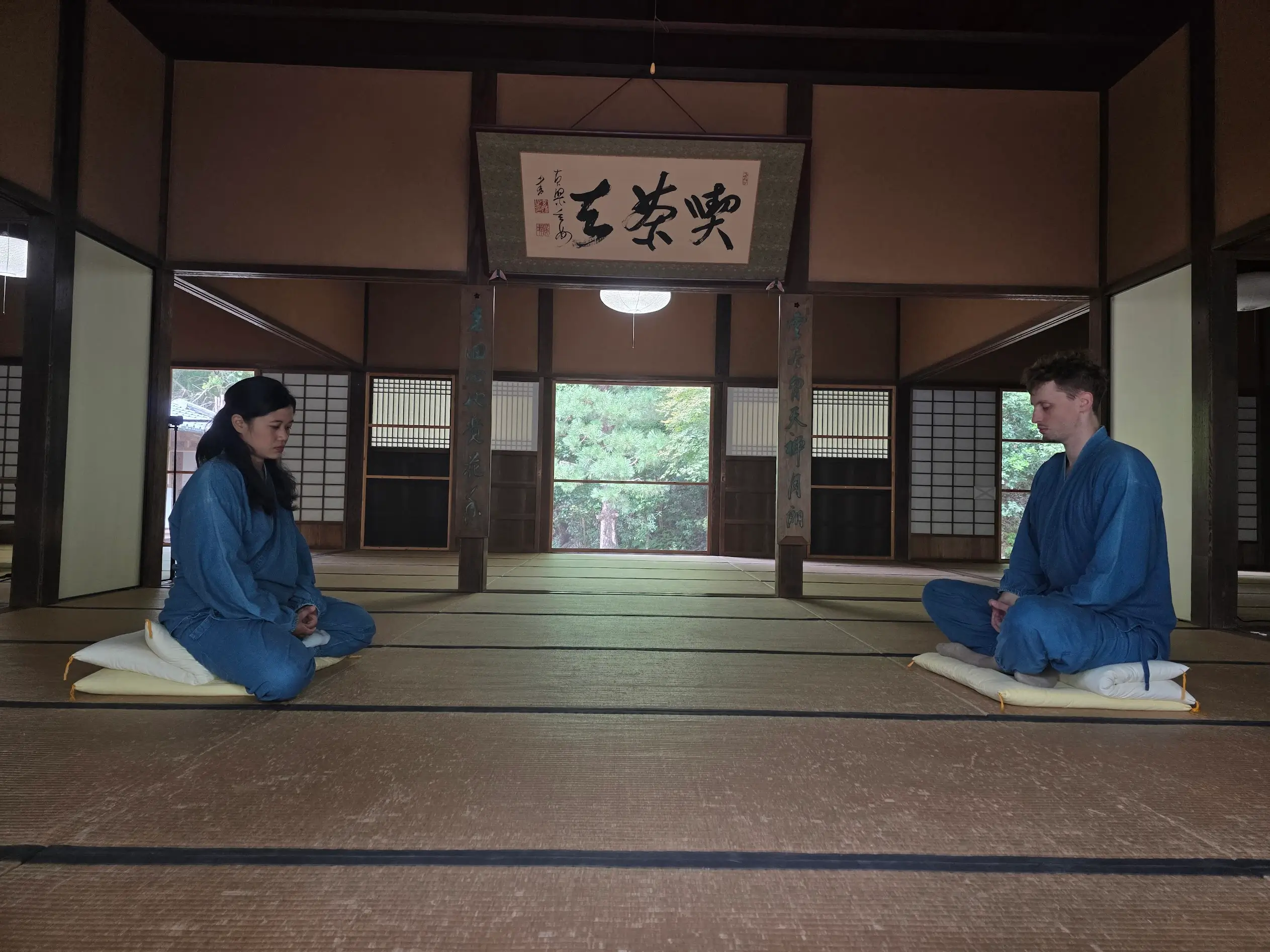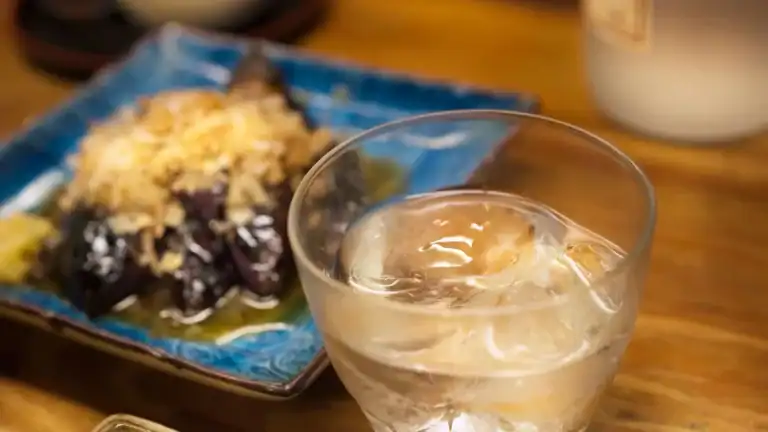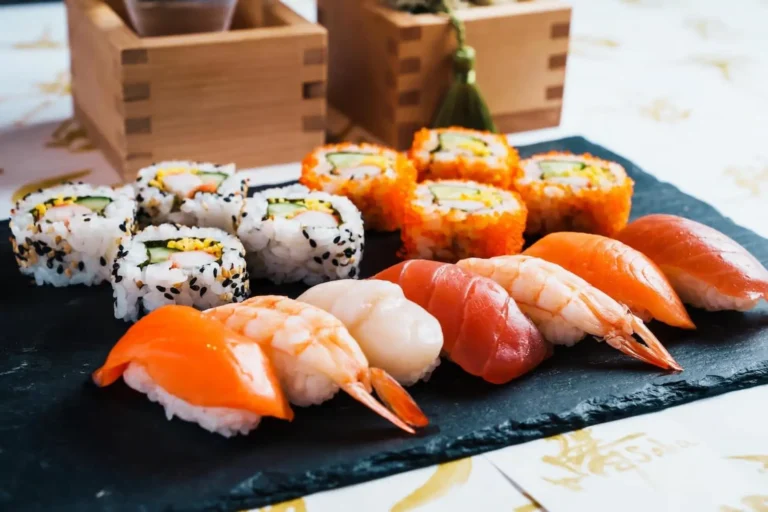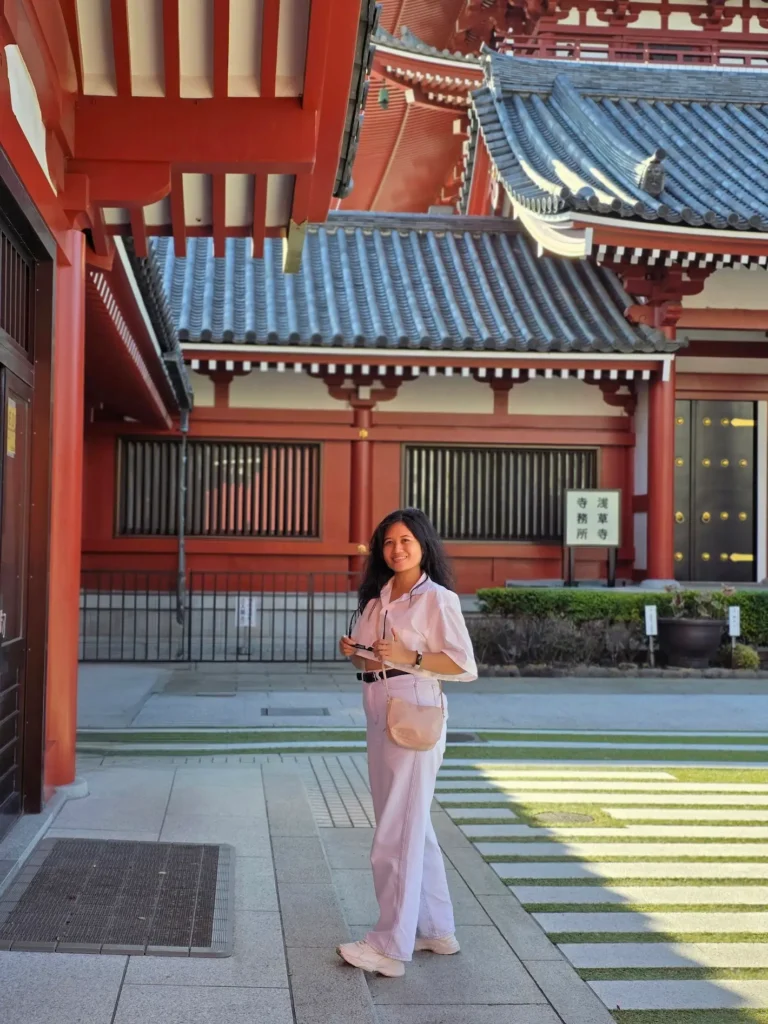15 Non-Touristy Things to Do in Kyoto for an Authentic Experience
Ever since I heard about Kyoto, it stayed at the top of my list. I did not only want to see it. I wanted to feel it.
If you are looking for non-touristy things to do in Kyoto that go beyond bamboo forests and crowded temples, this guide will help.
During my first trip to Kyoto, I skipped the tourist trail and spent days wandering quiet streets without a checklist. I even spent a day learning from a monk — and found the side of Kyoto most tourists never notice.
So, I organized my favorite non-touristy experiences by neighborhood so you can explore Kyoto like a local — whether that means walking through Gion’s lantern-lit alleys, having a traditional dinner in a 120-year-old townhouse, or learning how to make matcha in Uji.
This post contains affiliate links. If you book through them, I may earn a small commission — at no extra cost to you. Thank you for your support! Read our full disclosure.
Experience Zen Practice at Manpukuji Temple in Uji
Gion & Higashiyama
1. Stroll at Hanamikoji and the Shirakawa Canal

We actually stumbled across Hanamikoji Street and the Shirakawa Canal by accident while wandering through Kyoto without a plan — no checklist, no map, just curiosity.
It was sunset when we arrived, and the streets were almost empty. The soft orange light touched the wooden machiya houses, making them glow like lanterns.
The canal beside us whispered, and for a moment, it felt like we had slipped into another century.
It’s rare to find a corner of Gion this peaceful — most visitors come here during the day for geisha sightings and miss this tranquil hour entirely.
If you’re seeking non-touristy things to do in Kyoto, come here at sunrise or sunset instead. You’ll see Kyoto’s quieter rhythm when the city finally exhales and the charm of old Japan takes over.
Tip: Arrive early or stay late — both times offer the perfect light for photography without the crowds. This small stretch near Shirakawa-minami Dori is one of Kyoto’s most photogenic hidden gems.
2. Kennin-ji Temple, Kyoto’s Oldest Quiet Zen Escape
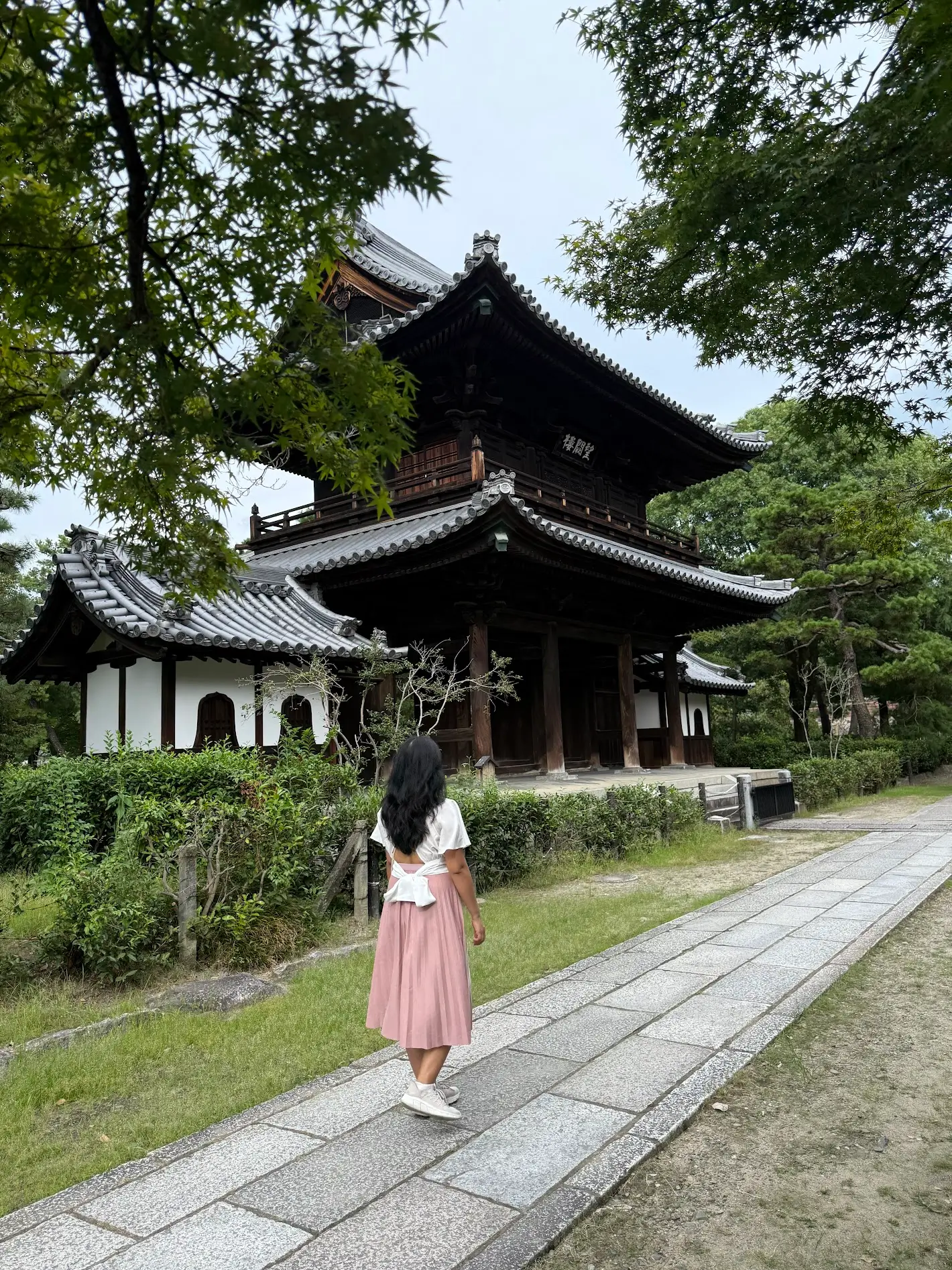
After a five-hour drive from Mount Fuji, we were exhausted and craving stillness. Kennin-ji Temple, tucked away in the heart of Gion, became our refuge.
We didn’t even go inside at first — we sat in the courtyard gardens surrounded by rustling leaves and the sound of birds.
The air felt different here: still, mindful, grounding. It was the kind of silence that clears your thoughts.
If you decide to step inside, you’ll find the famous Twin Dragons mural on the ceiling — a masterpiece that feels alive as it coils above you.
There’s also a series of peaceful Zen gardens that seem designed to slow your heartbeat. Despite its central location, Kennin-ji is often overlooked, making it a true off-the-beaten-path Kyoto experience.
Visitor Info: Entrance is around ¥500 (about $3 USD). Open daily from 10 a.m. to 5 p.m. For a meditative visit, go early morning when the temple is almost empty.
Why Go: This temple captures Kyoto’s essence — beauty through simplicity. If you’re looking for cultural things to do in Kyoto, Kennin-ji teaches that peace can be found not in isolation, but in mindful presence.
3. Experience a Kaiseki Meal — Kyoto’s Edible Art Form

I’d always been curious about kaiseki, Kyoto’s traditional multi-course dining ritual, and it turned out to be one of the most profound experiences of our trip.
Every course arrived like a poem: small, seasonal, and impossibly beautiful. We met the chef, who explained how each ingredient was chosen that morning and how the dishes reflected the season.
The pacing was slow, deliberate, and each bite was designed to make you pause.
The textures surprised me: a crisp lotus root, a soft cube of tofu layered with yuba, the faint smoke of grilled river fish. It wasn’t just food; it was a meditation on balance and respect for detail.
By the end of the meal, I understood why Kyoto’s spirit lives in its cuisine — everything here is made with intention. For first-time visitors, a kaiseki dinner is the most delicious way to connect with Kyoto’s culture.
We joined this Gion kaiseki dining experience, and it made the process effortless. The restaurant handled the reservation, explained each dish in English, and created a calm space where we could appreciate the craft.
Tip: Come hungry or opt for a lighter lunch beforehand — kaiseki isn’t about quantity, but the experience will feel deeply satisfying.
4. Visit Yasaka Shrine at Sunset

We found Yasaka Shrine by accident. We had mistaken it for the famous Yasaka Pagoda nearby.
When we arrived, the sun had just dipped behind the horizon, and the shrine glowed under the lanterns.
Locals tossed coins into the offering box, bowed, and rang the bells. The air smelled of incense. The evening cicadas sang softly.
We returned later that night after dinner, and it felt like another world. Quiet, glowing, timeless. Lanterns shimmered against vermilion gates, and shadows moved slowly through the courtyard.
Most visitors come during the day. But it is at twilight that this shrine reveals its softer rhythm. If you are looking for non-touristy things to do in Kyoto or want a glimpse of its spiritual quiet, this is where to feel it.
Tip: Arrive before sunset and stay as night falls. You’ll see the shrine in two moods. From here, walk straight into Maruyama Park next door, where locals gather under cherry trees in spring and fireflies drift through the summer air.
5. Backstreets of Ninen-zaka and Sannen-zaka
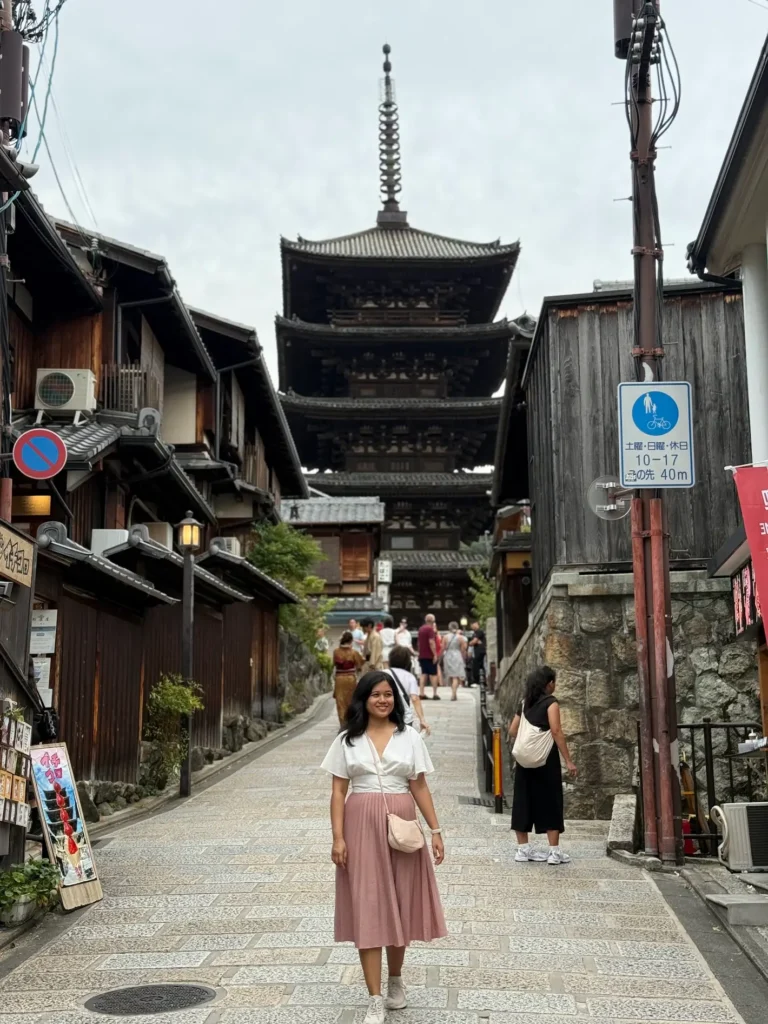
Most people visit Ninen-zaka and Sannen-zaka during the day, when tour groups fill the narrow lanes and every teahouse seems to hum with chatter.
But if you wait until after sunset, these historic streets transform. The shops close around 5 p.m., the crowds fade away, and what’s left feels like a scene from old Japan.
We had come here hoping to see the Yasaka Pagoda (Hōkan-ji Temple), but it was packed earlier in the day. Later that evening, we wandered back and found it empty.
The pagoda rose before us in perfect stillness, its silhouette framed by dim lanterns and wooden facades glowing with the last light of dusk.
Standing there alone, I felt something shift — as if time had paused. The air was cool, the stone path still warm from the afternoon sun, and the faint scent of incense drifted from a nearby home.
It was one of those hidden gems in Kyoto that isn’t really hidden at all; you just have to experience it at the right hour.
Walking those backstreets after dark gave me a deeper sense of connection to Kyoto’s past. Without the noise and movement of the day, every creak of the old wood, every flicker of lantern light, felt sacred.
This is the Kyoto I had been searching for. A place that is quiet, timeless, and deeply human.
Tip: Visit after 7 p.m., when most shops have closed and the tour buses are gone. Bring a camera or simply take your time — the area feels safe, and the lantern-lit streets make it one of the most romantic and authentic places in Kyoto after dark.
6. Browse a Small Craft Shop in Shimokawaracho
If you exit through the back of Yasaka Shrine and wander toward the Yasaka Pagoda, you’ll find yourself in Shimokawaracho, a quiet street lined with small artisan shops.
Most travelers hurry past on their way to the pagoda, but slowing down here is one of Kyoto’s loveliest surprises.
We stopped at several little stores, each one filled with handmade treasures: delicate ceramics, hand-dyed fabrics, wooden fans, and intricate incense sets.
One shop in particular caught my attention. It is a tiny incense store called やまとごころ祇園下河原 (Yamatogokoro Gion Shimokawara).
The scent drew us in before we even saw it. Inside, shelves were lined with small brass holders, charcoal, and bundles of Kyoto-made incense.
The owner greeted us warmly and explained how each piece was crafted locally. I ended up buying a tiny brass incense holder.
It felt completely different from the mass-produced souvenirs I’d seen in Osaka or Tokyo. Every object here seemed made with quiet pride and intention.
What made it special wasn’t just the products, but the people. In many of these shops, the owners are also the makers.
They’ll tell you where the wood came from, how the metal was cast, or why the incense smells the way it does. These are the kinds of local experiences in Kyoto that stay with you — human, personal, and genuine.
What Else You’ll Find Here: Along this same street, you’ll discover small boutiques selling handmade jewelry, washi-paper notebooks, and calligraphy brushes. It’s a wonderful place to pick up something unique that carries the spirit of the city.
You can notice identical souvenir shops everywhere, but supporting these small craftspeople feels more meaningful. Each purchase is a quiet thank-you — not just for their work, but for keeping Kyoto’s traditions alive.
If you’re looking for hidden gems in Kyoto, spend an afternoon in Shimokawaracho and let curiosity lead you from one handmade story to another.
Central Kyoto
7. Learn Zazen Meditation from a Monk
Of everything I did in Kyoto, the most meaningful was spending half a day learning zazen meditation from a Buddhist monk.
My partner, Mat, and I joined a small group at a quiet temple tucked away from the city’s main paths. It was peaceful before we even began.
We changed into simple monk robes before practice, which helped us shed a bit of the outside world. The monk guided us through the posture — sitting cross-legged on tatami mats, hands resting gently in our laps, eyes open but unfocused.
The goal wasn’t to escape thought, but to simply notice it. Every breath, every sound, became part of the meditation itself.
Unlike the mindfulness practices I usually teach, this form of meditation doesn’t involve closing your eyes or retreating inward.
Instead, it invites awareness of the present, space, and the body’s natural rhythm. With each minute, the chatter in my mind softened until I felt completely grounded.
Afterward, we were served a traditional Fucha-style vegetarian lunch, prepared by the temple itself. It was delicate, humble, and perfectly balanced.
That afternoon changed how I saw Kyoto. It reminded me that the city isn’t just about temples, food, or beauty — it’s about presence.
If you’re looking for cultural things to do in Kyoto that go beyond sightseeing, this experience offers something truly rare — a chance to feel Kyoto’s spiritual rhythm from the inside.
Experience this unforgettable Zen practice — it includes meditation with an English-speaking monk, a tour of the temple, and a traditional Fucha lunch.
Tip: Wear comfortable clothes and come with an open mind. Zazen isn’t about “doing” meditation perfectly; it’s about learning to be.
8. Visit Manpuku-ji Temple

Our zazen meditation took place at Manpuku-ji Temple, a place that feels unlike any other in Kyoto, for that matter. Even if you don’t plan to meditate, I’d still recommend visiting.
This temple, founded by the Chinese monk Ingen Ryūki in the 17th century, introduced not just the practice of Zen meditation, but also ideas that shaped Japan’s tea culture and vegetarian cuisine.
Walking through its massive wooden gates, I immediately noticed how different it felt, the curved roofs and bold red columns reflected a distinctly Chinese architectural style. It felt both foreign and familiar, like a piece of another world quietly resting in Kyoto.
Hardly anyone was there when we visited. We wandered through long wooden corridors, listening to the wind move through the trees.
The air was cool and scented with pine. In one courtyard, a monk raked sand into perfect concentric circles.
What I loved most about Manpuku-ji was the quiet. Every sound had a slow, steady rhythm. A soft bell in the distance. The calm stayed with me long after we left.
Tip: Visit on a weekday morning for a truly peaceful experience. The temple is in Uji, about 30 minutes from central Kyoto by train, making it one of the best off-the-beaten-path Kyoto temples for travelers craving quiet reflection.
9. Visit a Craft Workshop in Nishijin
If meditation or matcha are not your thing, you can still connect with Kyoto through its crafts.
Go to Nishijin, the old textile district. Artisans here have woven silk and kimono fabric for over a thousand years.
We spent an afternoon walking its quiet streets and stepping into small workshops. You can watch weavers at work or try traditional crafts yourself.
Kimono dyeing, hand weaving, gold-thread embroidery, and pottery shaped in a Kiyomizu-style kiln are all taught by people who practice these skills every day.
The sound of the looms is steady. Movements are slow and precise. You can feel the care that goes into each piece.
These workshops are not staged for visitors. They are living traditions passed through families.
Taking a craft class is not about making a souvenir. It is about seeing how patience and intention shape Kyoto’s culture. Every thread, pattern, and clay piece carries the quiet pride of its maker.
Tip: Wear comfortable shoes and clothes. You will stand, move, and work with your hands, so you want to feel relaxed and able to focus on the craft rather than what you’re wearing.
10. Stay in a Machiya Townhouse or Small Ryokan
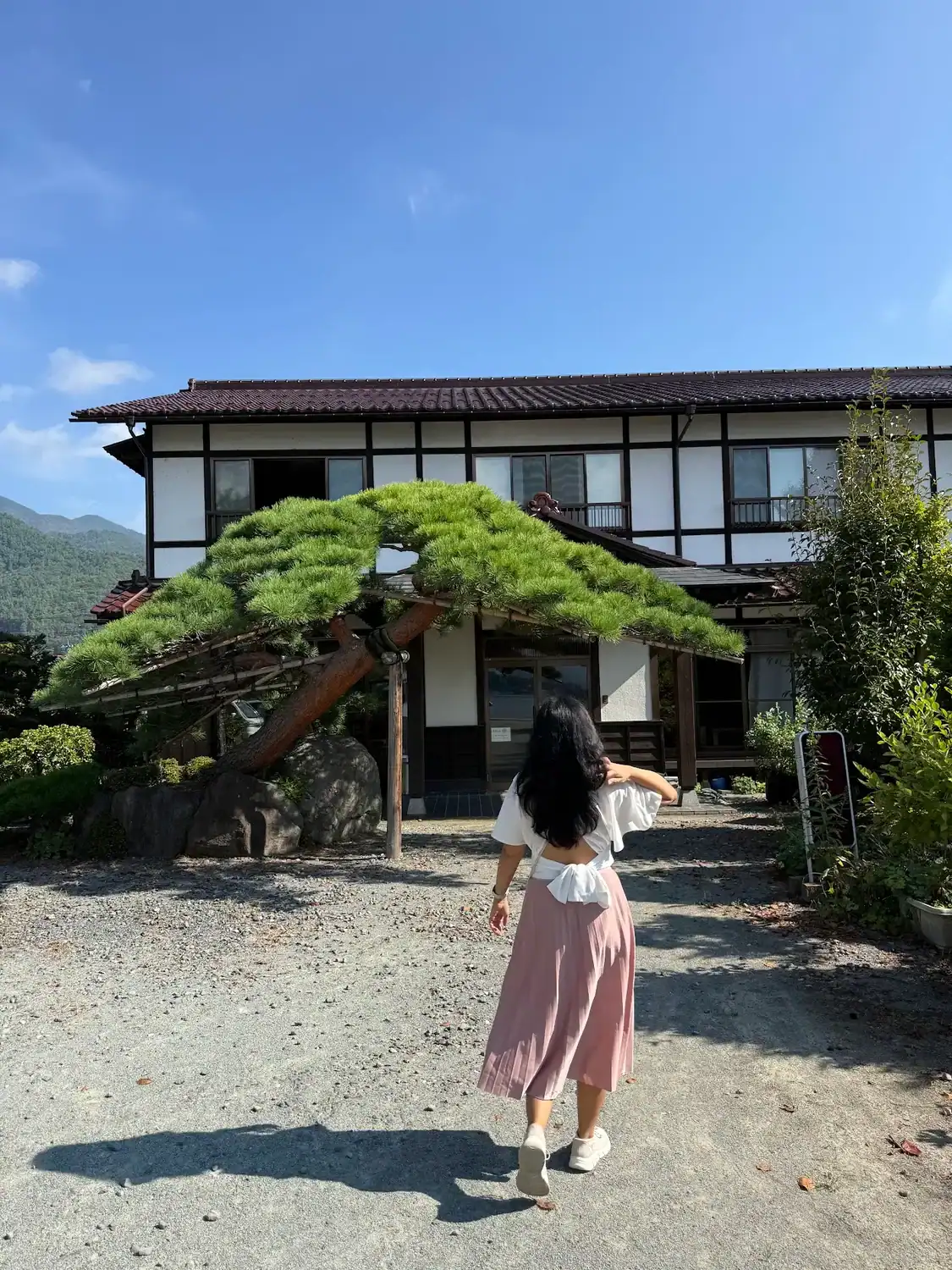
While we didn’t stay overnight in a machiya townhouse, our kaiseki dinner took place inside one — a 120-year-old wooden home that perfectly captured Kyoto’s timeless charm.
The sliding paper doors, tatami floors, and soft glow of lanterns created an atmosphere that felt more like a memory than a room.
Earlier in our trip, we’d stayed at a ryokan near Mount Fuji, where we slept on futons, woke to the sound of birds, and soaked in a small onsen. That experience convinced me that staying in a traditional inn is a must when visiting Kyoto.
Machiya and ryokan stays are about more than just sleeping — they let you feel part of the city’s quiet rhythm. Mornings begin with the scent of cedar and the sound of a bamboo fountain trickling outside. Evenings end with hot tea, a futon laid out by your host, and the comforting creak of old wood.
If you’re visiting Kyoto for the first time, consider spending at least one night in a traditional townhouse or ryokan. It’s the most immersive way to experience Japanese hospitality and design — where every gesture feels intentional and kind.
Tip: Book early, especially in spring or autumn. Look for properties that have been renovated to preserve the original architecture but include modern comforts like heating and private bathrooms.
Why It’s Worth It: Staying in a machiya lets you stop being a visitor and start feeling like a quiet participant in Kyoto’s story — even if just for one night.
11. End the Day at a Local Izakaya or Sake Bar
I plan to spend more time in Kyoto next time, and one thing I will always make space for is an evening in a small local izakaya. These places feel welcoming. Lanterns glow softly, people laugh, and the sound of sake glasses fills the air.
Even if you do not drink, izakayas are worth visiting for their warmth. Locals talk over grilled skewers, couples share small plates, and travelers are welcomed without hesitation.
This is Kyoto at street level. Calm, friendly, and unplanned.
The best areas to explore are Pontocho Alley and the backstreets near Gion Shijo. The lanes are narrow and full of small doorways that lead to places with their own character.
Sit down, order something simple like yakitori or tempura, and let the night unfold.
Tip: Start with a small izakaya and stay only if it feels comfortable. The right one will feel easy and relaxed as soon as you step inside.
Uji
12. Take the Train to Uji – Kyoto’s Green Escape
If you’re not renting a car, I highly recommend taking the short train ride from Kyoto to Uji, often called Kyoto’s Tea Town. The journey takes only about 25 minutes from Kyoto Station, but it feels like you’ve entered another world.
The train glides past quiet neighborhoods and open countryside, with glimpses of the Uji River winding alongside.
As the city fades away, you’ll start to see rolling hills dotted with tea fields, a preview of what makes Uji so special. It’s one of the easiest day trips from Kyoto, but it feels like a gentle exhale from the city’s energy.
Arriving at Uji Station, everything moves at a calmer pace. The streets are lined with tea shops, old wooden facades, and soft music drifting from cafés. This is where Kyoto slows down and invites you to savor it.
Train Info: From Kyoto Station, take the JR Nara Line to Uji Station (about ¥240 / USD $1.50 one way). Trains run every 15–20 minutes.
13. Visit Byodo-in Temple
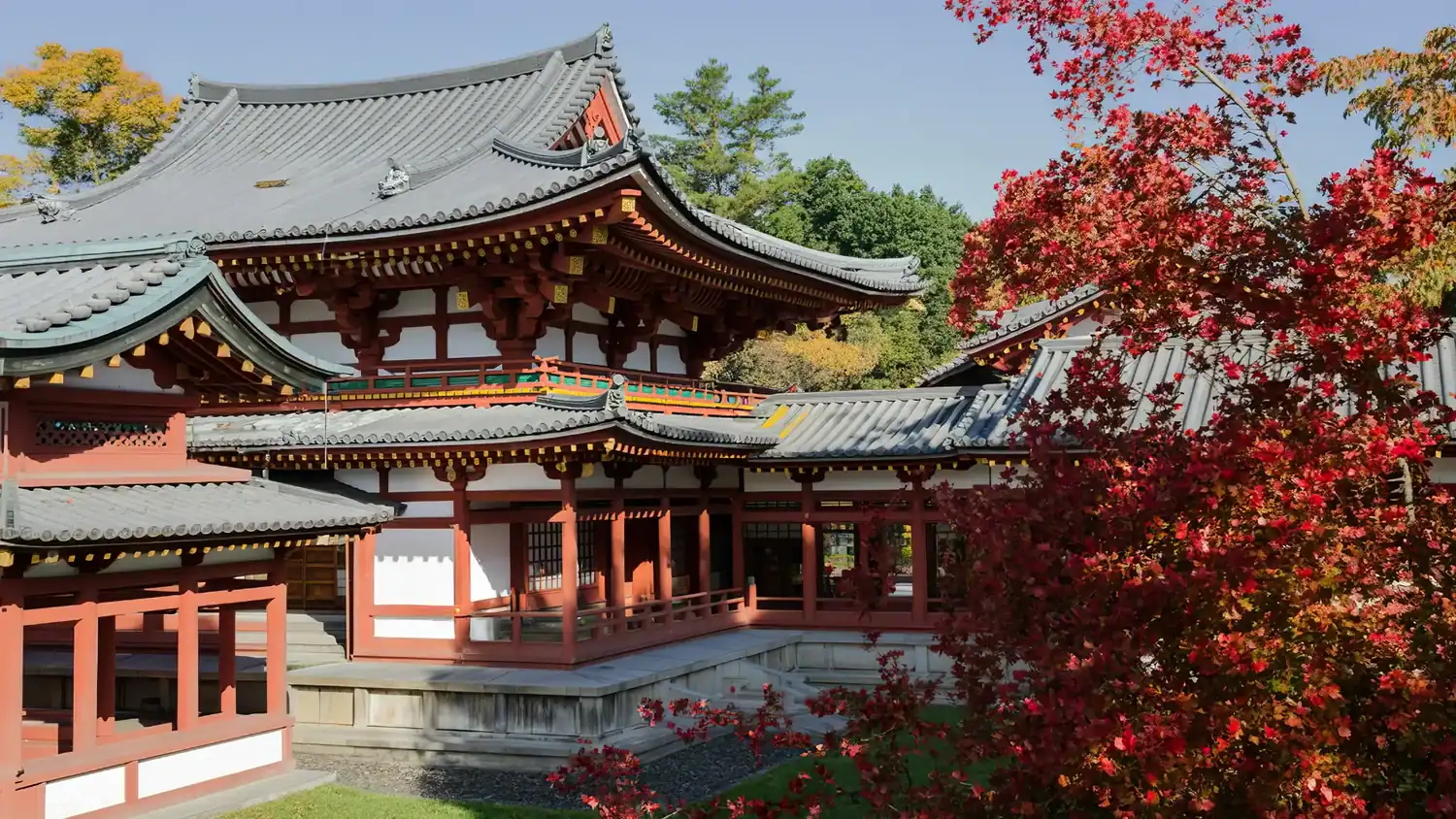
While I was learning zazen at Manpuku-ji, my brother and friend visited Byodo-in. When we met later, they described it as one of the calmest places they had seen.
The Phoenix Hall is the main highlight. Its rooflines are balanced and clear, and it appears on the ¥10 coin. The hall reflects in the pond in front of it, especially in the softer morning or late afternoon light.
Byodo-in does not feel crowded. The grounds are open and quiet. You can hear the river nearby and move at your own pace. Inside, you will find a 1,000-year-old Amida Buddha statue that shows the temple’s long history.
Tip: Go early morning or late afternoon for the best view of the reflection. Entrance is around ¥700 (about $5 USD).
If you want a cultural stop outside the city center, Byodo-in offers space to slow down and take your time.
14. Join a Matcha Tea Ceremony in Uji
My brother also joined a matcha tea ceremony while in Uji — and he hasn’t stopped talking about it since. He learned about the process from leaf to cup: how tea is harvested, dried, and ground into the fine, vibrant green powder that Uji is famous for.
Under the host’s guidance, he whisked his own bowl of matcha, laughing that he could now make it “professionally.”
Later, we met in one of Uji’s teahouses, where the aroma of fresh matcha filled the air. As a lifelong matcha lover, I’ve tasted it in more than a hundred places across Japan, and nothing compares to Uji’s.
The flavor is smooth, grassy, and slightly sweet, with none of the bitterness you often find elsewhere.
If you want to experience the art of Japanese tea firsthand, join a matcha-making experience at the Kyoto Tea Museum. You’ll learn how to grind your own tea using a stone mill and prepare a cup from scratch, guided by local tea masters.
Why It’s Special: Uji matcha is grown in nutrient-rich soil along the Uji River and shaded before harvest to intensify its flavor. Making and tasting it here, surrounded by the same hills where it’s grown, connects you directly to Kyoto’s spirit of patience, craft, and ceremony.
15. Walk Along the Uji River at Sunset
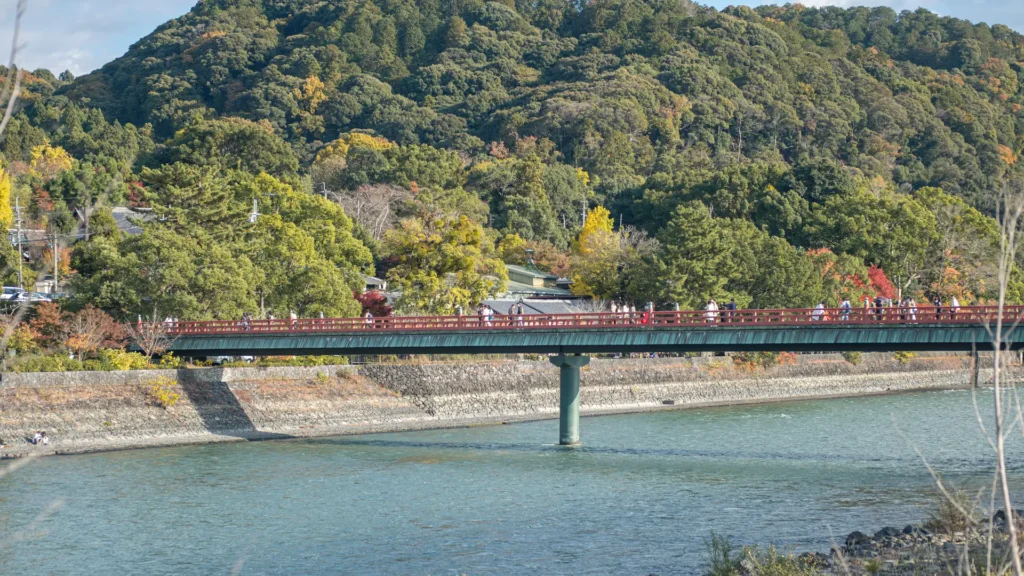
Before heading back to Kyoto, don’t rush to catch the train just yet. Take a slow walk along the Uji River in the evening; it’s one of the most peaceful, authentic scenes I’ve witnessed in Japan.
Families stroll hand in hand, fishermen cast lines into the calm water, and the golden light turns everything warm and soft.
The bridges glow in the sunset, and the distant hills fade into misty silhouettes. You’ll hear laughter from riverside cafés and the sound of water gently brushing against the rocks.
It’s the kind of place where time feels suspended. A reminder that travel doesn’t always need to be busy to be beautiful.
As I stood there watching the sky darken, I realized this was the perfect way to end my Kyoto journey: quietly, without fanfare, just absorbing the rhythm of everyday life.
This quiet moment by the river felt like the true Kyoto spirit. Sometimes, the best thing you can do here is nothing at all, just be present, breathe in the scent of tea, and let Kyoto reveal itself to you.
Tip: Sit on one of the riverside benches for a few minutes. Let the stillness sink in before you return to the city.
Seeing Kyoto Differently
Kyoto isn’t about how many temples you see. It’s about those moments that stay with you long after you’ve left.
If you’re ready to experience this slower, more authentic side of Japan, start planning your trip with my Uji Day Trip Guide and Best Neighborhoods to Stay in Kyoto. Both were written from the same local, mindful perspective that shaped this journey.
Read More About Japan
- I Tried the Best Sushi Making Class in Tokyo
- The Best eSIM for Japan That Actually Worked for Me
- 10 Best Day Trips from Tokyo (That Are Actually Worth It)
- Is the Tokyo Metro Pass Worth It?
- 15 Best Kawaguchiko Hotels with Mt. Fuji Views
- 14 Of The Best Cooking Classes In Tokyo For Tourists
- 14 Cooking Classes in Kyoto You’ll Love
- 10 Fun and Authentic Cooking Classes in Osaka


